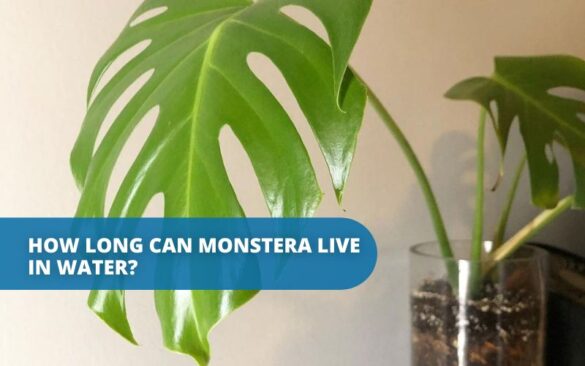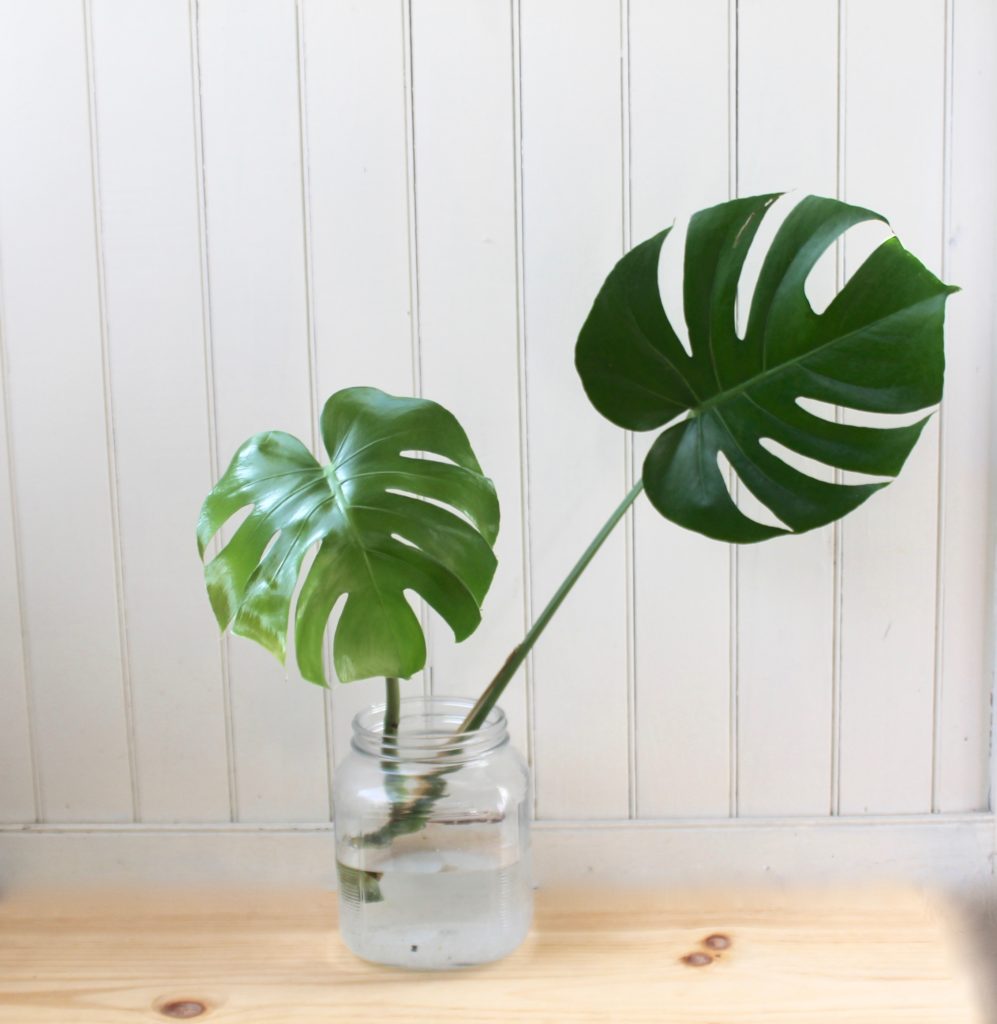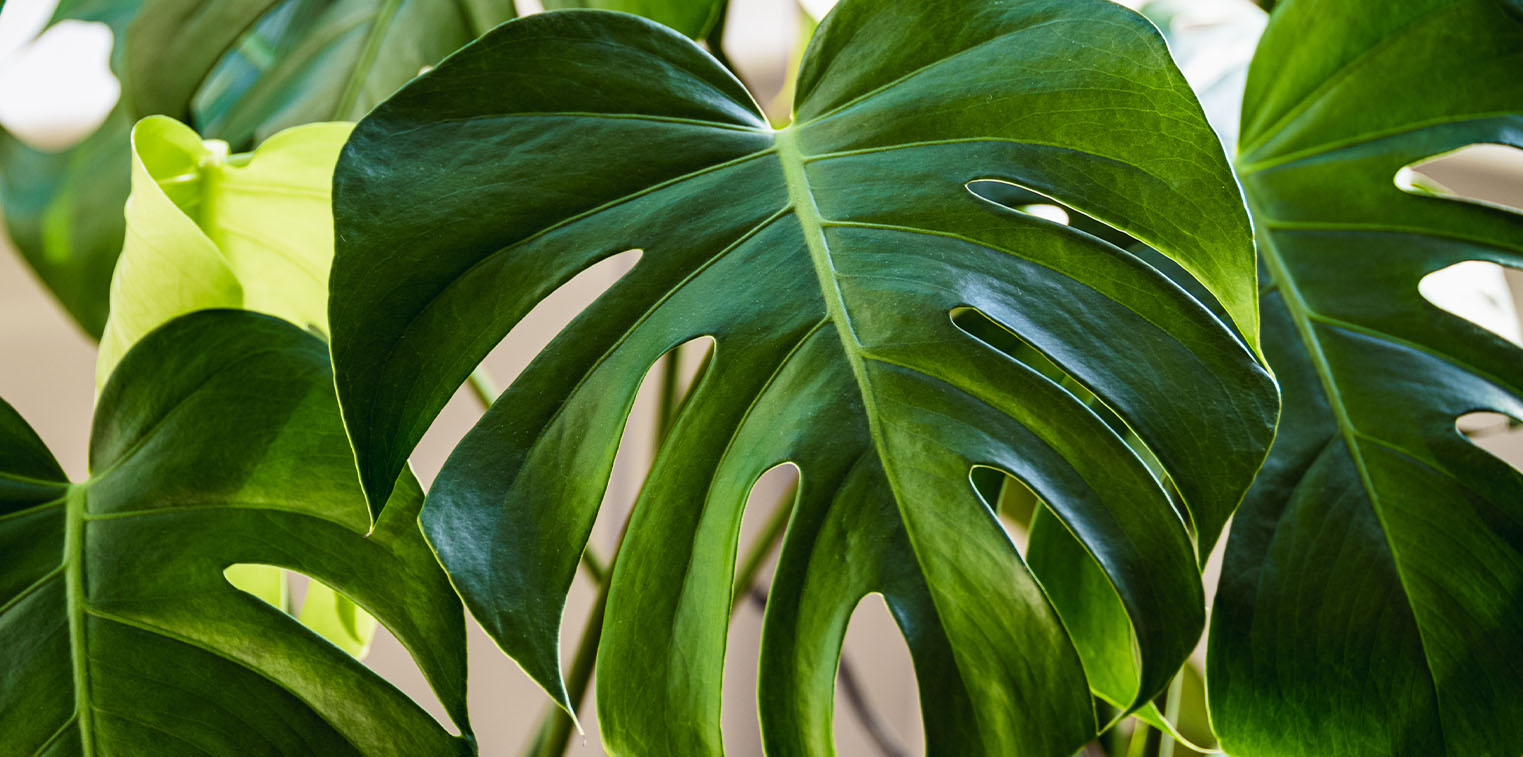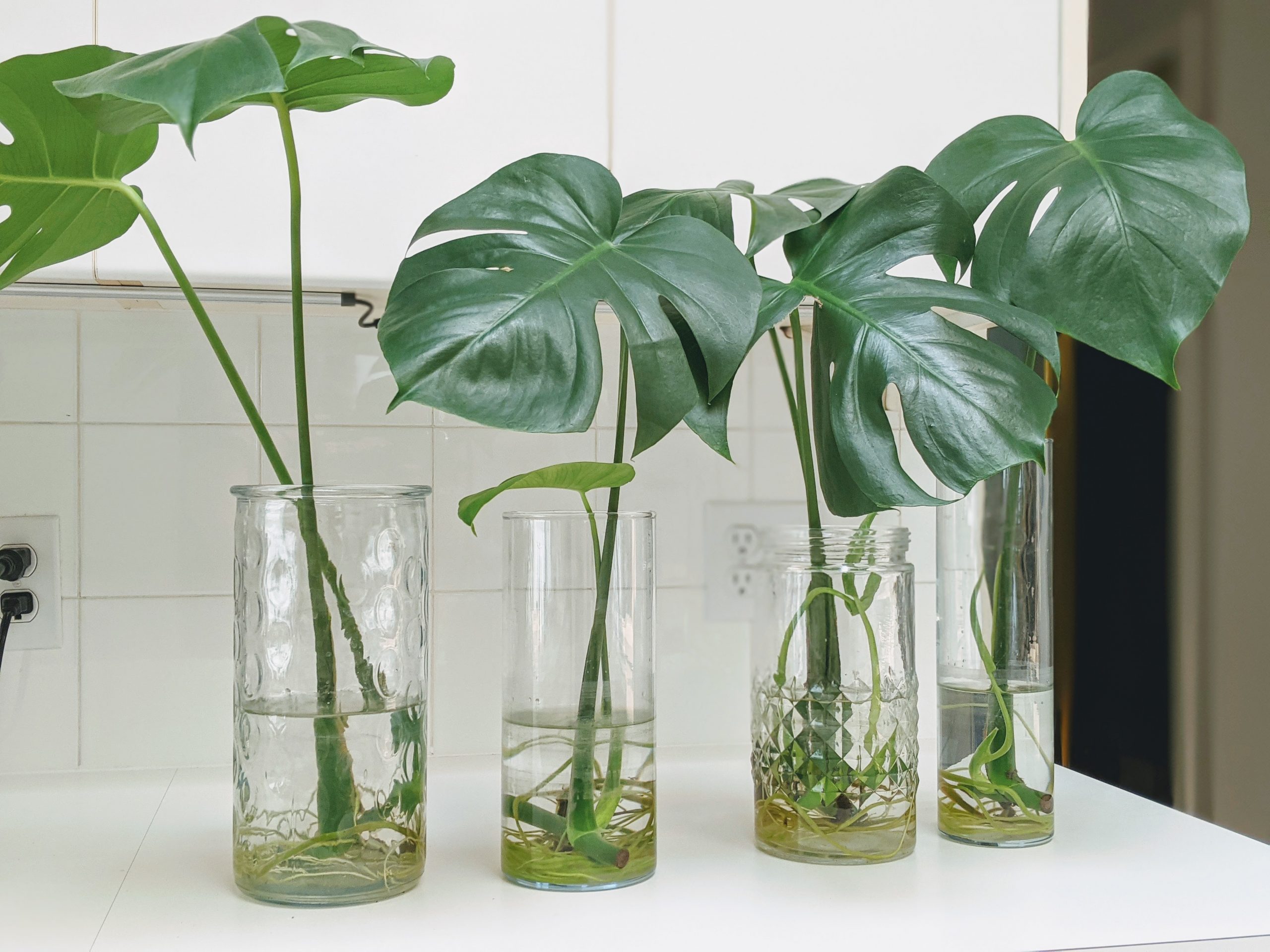What Makes Monsteras Unique: Understanding Their Aquatic Adaptations
Monsteras are a type of flowering plant that belongs to the Arum family. Native to the tropical regions of Central and South America, these plants have adapted to thrive in environments with high humidity and abundant water. In their natural habitat, Monsteras can be found growing in the understory of rainforests, where they use their aerial roots to absorb moisture and nutrients from the air.
One of the key adaptations that allow Monsteras to survive in aquatic environments is their ability to produce aerial roots. These roots are capable of absorbing oxygen and nutrients from the air, allowing the plant to thrive in low-light conditions. Additionally, Monsteras have developed a unique leaf structure that allows them to absorb moisture and nutrients from the air, reducing their reliance on soil.
When grown in water, Monsteras are able to absorb nutrients and oxygen directly from the water, allowing them to thrive in a variety of aquatic environments. This adaptability makes them a popular choice for aquariums and water gardens, where they can add a touch of tropical beauty to the underwater landscape.
Understanding the unique adaptations of Monsteras is essential for providing the right care and conditions for these plants to thrive. By replicating their natural habitat and providing the right balance of light, nutrients, and water, growers can help their Monsteras reach their full potential and enjoy their beautiful, glossy leaves for years to come.
For those wondering how long Monsteras can live in water, the answer depends on a variety of factors, including water quality, light, temperature, and fertilization. With proper care and attention, Monsteras can thrive in water for several years, making them a great choice for aquariums and water gardens.
How to Propagate Monsteras in Water: A Step-by-Step Guide
Propagating Monsteras in water is a relatively simple process that can be done with a few basic materials. To get started, you will need a healthy Monstera plant with long stems and plenty of nodes, a sharp knife or pruning tool, a glass or container filled with water, and a few rocks or pebbles to weigh down the cuttings.
Step 1: Choose a Healthy Stem
Select a stem with at least two nodes, as these will be the points where the new roots will form. Cut the stem just below a node using a sharp knife or pruning tool, making sure to leave at least two inches of stem attached to the mother plant.
Step 2: Prepare the Water
Fill a glass or container with lukewarm water, and add a few rocks or pebbles to weigh down the cuttings. This will help keep the cuttings submerged and prevent them from floating to the surface.
Step 3: Place the Cuttings in Water
Gently place the cuttings in the water, making sure that the nodes are fully submerged. You can use a few rocks or pebbles to hold the cuttings in place if necessary.
Step 4: Provide Adequate Light and Nutrients
Place the container in a bright, indirectly lit area, but not in direct sunlight. You can also add a few drops of liquid fertilizer to the water to provide the cuttings with essential nutrients.
Step 5: Monitor and Maintain
Check the water level daily and top it off as necessary. You can also change the water completely every 1-2 weeks to prevent the buildup of toxins. With proper care and attention, your Monstera cuttings should start to develop roots within 1-2 weeks, and can be transplanted into a pot or aquarium once they have developed a robust root system.
By following these simple steps, you can successfully propagate your Monstera in water and enjoy the beauty of these stunning plants for years to come. Remember to provide your Monstera with the right conditions, including adequate light, nutrients, and water quality, to help it thrive and live a long and healthy life in water.
The Benefits of Growing Monsteras in Water: Advantages and Considerations
Growing Monsteras in water can be a highly rewarding experience, offering a range of benefits for both the plant and the grower. One of the main advantages of growing Monsteras in water is the reduced risk of pests and diseases. By eliminating the need for soil, growers can avoid common problems such as root rot, fungal infections, and pest infestations.
Another benefit of growing Monsteras in water is the increased humidity. Monsteras thrive in humid environments, and growing them in water allows for a consistent level of humidity that can be difficult to achieve in soil. This can lead to healthier, more robust plants with improved growth rates.
In addition to the practical benefits, growing Monsteras in water can also add a touch of elegance and sophistication to any room. The unique, trailing stems and beautiful leaves of the Monstera plant make it a popular choice for aquariums, water gardens, and other aquatic displays.
However, growing Monsteras in water also requires some special considerations. One of the most important is the need for regular water changes. Monsteras can be sensitive to changes in water quality, and regular water changes can help to prevent the buildup of toxins and maintain healthy growth.
Another consideration is the need for monitoring water quality. Monsteras require a balanced diet of nutrients, and water quality can have a significant impact on their health. Regular testing of water parameters such as pH, temperature, and nutrient levels can help to ensure that the plant is receiving the nutrients it needs to thrive.
By understanding the benefits and considerations of growing Monsteras in water, growers can unlock the full potential of these beautiful plants and enjoy their unique characteristics for years to come. Whether you’re a seasoned grower or just starting out, growing Monsteras in water can be a fun and rewarding experience that adds a touch of elegance and sophistication to any room.
How Long Can Monsteras Live in Water: Factors Affecting Their Longevity
One of the most common questions asked by Monstera enthusiasts is “how long can Monstera live in water?” The answer to this question depends on several factors, including water quality, light, temperature, and fertilization.
Water quality is one of the most critical factors affecting the longevity of Monsteras in water. Monsteras are sensitive to changes in water quality, and poor water quality can lead to a range of problems, including root rot, nutrient deficiencies, and reduced growth rates. Regular water changes and monitoring of water parameters such as pH, temperature, and nutrient levels can help to prevent these problems and ensure that the plant is receiving the nutrients it needs to thrive.
Light is another important factor affecting the longevity of Monsteras in water. Monsteras require bright, indirect light to photosynthesize and grow, but direct sunlight can cause the water to become too warm and promote the growth of algae. East- or west-facing windows are ideal for growing Monsteras in water, as they provide bright, indirect light without the risk of overheating.
Temperature is also an important factor affecting the longevity of Monsteras in water. Monsteras prefer temperatures between 65-75°F (18-24°C), and temperatures outside of this range can cause stress and reduce the plant’s lifespan. Avoid placing Monsteras near heating or cooling vents, fireplaces, or drafty windows, as these can cause temperature fluctuations that can harm the plant.
Fertilization is also important for the longevity of Monsteras in water. Monsteras require a balanced diet of nutrients to grow and thrive, and fertilization can help to provide these nutrients. Use a balanced, water-soluble fertilizer at half the recommended strength to avoid burning the roots.
By understanding the factors that affect the longevity of Monsteras in water, growers can take steps to create a thriving environment that promotes healthy growth and extends the lifespan of their plants. With proper care and attention, Monsteras can live for several years in water, providing a beautiful and elegant display of foliage and flowers.
Common Challenges and Solutions: Troubleshooting Monstera Care in Water
While growing Monsteras in water can be a rewarding experience, there are some common challenges that may arise. In this section, we will address some of the most common issues that can affect Monstera care in water and provide solutions and troubleshooting tips to help readers overcome these problems.
Root Rot: One of the most common problems that can affect Monsteras in water is root rot. This can be caused by a variety of factors, including poor water quality, inadequate light, and excessive fertilization. To prevent root rot, make sure to change the water regularly and provide adequate light and nutrients. If you notice any signs of root rot, such as soft or mushy roots, remove the affected roots and treat the plant with a fungicide.
Algae Growth: Algae growth is another common problem that can affect Monsteras in water. This can be caused by excessive light, poor water quality, and inadequate nutrients. To prevent algae growth, make sure to provide adequate nutrients and maintain good water quality. You can also use an algae scrubber or add a small amount of algae-control medication to the water.
Nutrient Deficiencies: Monsteras require a balanced diet of nutrients to grow and thrive. If the plant is not receiving enough nutrients, it can lead to a range of problems, including yellowing leaves, stunted growth, and reduced flowering. To prevent nutrient deficiencies, make sure to provide a balanced fertilizer and maintain good water quality.
Other Common Problems: Other common problems that can affect Monstera care in water include pests, diseases, and temperature fluctuations. To prevent these problems, make sure to monitor the plant regularly and take action quickly if you notice any signs of trouble.
Troubleshooting Tips: If you are experiencing any problems with your Monstera in water, here are some troubleshooting tips to help you identify and solve the issue:
Check the water quality: Make sure the water is clean and free of toxins.
Adjust the light: Make sure the plant is receiving adequate light, but not too much.
Check the temperature: Make sure the temperature is within the optimal range for Monsteras.
Monitor for pests: Check the plant regularly for signs of pests, such as spider mites, mealybugs, and scale.
By following these troubleshooting tips and taking action quickly if you notice any problems, you can help to prevent common challenges and ensure that your Monstera thrives in water.
Optimizing Water Conditions for Monsteras: pH, Temperature, and Nutrients
Monsteras are adapted to thrive in a variety of water conditions, but optimal growth and health require specific pH, temperature, and nutrient levels. In this section, we will delve into the specifics of water conditions that are optimal for Monsteras and provide tips on how to test and adjust these parameters to create a thriving environment.
pH: Monsteras prefer a slightly acidic to neutral pH, ranging from 6.0 to 7.0. A pH outside of this range can lead to nutrient deficiencies and reduced growth. To test the pH of your water, use a pH test kit or pH meter. If the pH is too high or too low, adjust it by adding a pH adjuster or using a different water source.
Temperature: Monsteras prefer temperatures between 65°F to 75°F (18°C to 24°C). Avoid placing your Monstera in areas with extreme temperature fluctuations, such as near heating or cooling vents, fireplaces, or drafty windows.
Nutrients: Monsteras require a balanced diet of nutrients to grow and thrive. Use a water-soluble fertilizer specifically formulated for aquatic plants, and follow the manufacturer’s instructions for application rates. Avoid over-fertilizing, as this can lead to algae growth and reduced water quality.
Testing and Adjusting Water Parameters: Regularly test the water for pH, temperature, and nutrient levels to ensure optimal conditions for your Monstera. Use a water test kit or send a water sample to a laboratory for analysis. Based on the test results, adjust the water parameters as needed to create a thriving environment for your Monstera.
Water Hardness: Monsteras prefer soft to moderately hard water, with a water hardness of 5-15 dGH. If your water is too hard, consider using a water softener or a different water source.
Water Movement: Monsteras prefer gentle water movement, which helps to prevent stagnation and promote healthy growth. Use a water pump or aerator to create gentle water movement, but avoid strong currents that can damage the plant.
By optimizing the water conditions for your Monstera, you can create a thriving environment that promotes healthy growth and longevity. Remember to regularly test and adjust the water parameters to ensure optimal conditions for your plant.
Monitoring and Maintaining Water Quality: Tips for Healthy Monstera Growth
Regular water changes and monitoring of water quality are crucial for maintaining healthy Monstera growth in water. Poor water quality can lead to a range of problems, including root rot, algae growth, and nutrient deficiencies. In this section, we will provide tips on how to monitor water quality and perform regular maintenance tasks to keep your Monstera thriving.
Water Changes: Regular water changes are essential for maintaining healthy Monstera growth. Change the water completely every 1-2 weeks, or as needed. Use a gravel vacuum to remove debris and waste from the substrate, and replace the old water with fresh, dechlorinated water.
Water Testing: Test the water regularly for pH, ammonia, nitrite, and nitrate levels. Use a water test kit or send a water sample to a laboratory for analysis. Based on the test results, adjust the water parameters as needed to create a thriving environment for your Monstera.
Water Quality Monitoring: Monitor the water quality regularly for signs of poor water quality, such as cloudy or discolored water, excessive algae growth, or unusual odors. Take action quickly if you notice any of these signs, as poor water quality can lead to serious health problems for your Monstera.
Maintenance Tasks: Perform regular maintenance tasks to keep your Monstera thriving in water. These tasks include cleaning the aquarium or container, replacing the filter media, and trimming the plant to maintain its shape and promote healthy growth.
By monitoring and maintaining water quality, you can create a thriving environment for your Monstera to grow and thrive. Remember to perform regular water changes, test the water regularly, and monitor the water quality for signs of poor water quality. With proper care and attention, your Monstera can live a long and healthy life in water.
Conclusion: Unlocking the Full Potential of Your Monstera in Water
In conclusion, growing Monsteras in water can be a rewarding and unique experience. By understanding the adaptations that allow Monsteras to thrive in aquatic environments, you can create a thriving environment that promotes healthy growth and longevity.
Remember to provide your Monstera with the right conditions, including adequate light, nutrients, and water quality. Regular water changes and monitoring of water quality are crucial for maintaining healthy Monstera growth.
By following the tips and guidelines outlined in this article, you can unlock the full potential of your Monstera in water. Experiment with different conditions and find the optimal environment for your plant to thrive.
With proper care and attention, your Monstera can live a long and healthy life in water, providing you with a beautiful and unique display of foliage and flowers.
So, how long can Monstera live in water? With the right conditions and care, Monsteras can live for several years in water, making them a great choice for aquariums and water gardens.
By understanding the factors that affect their longevity, such as water quality, light, temperature, and fertilization, you can create a thriving environment that promotes healthy growth and longevity.
In summary, growing Monsteras in water requires attention to detail and a commitment to providing the right conditions. By following the tips and guidelines outlined in this article, you can unlock the full potential of your Monstera in water and enjoy a beautiful and unique display of foliage and flowers.








